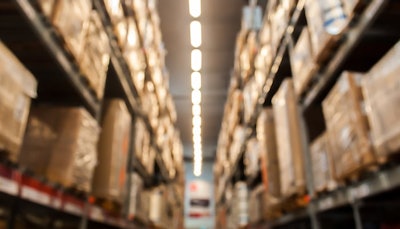
By Bill Wade, Wade & Partners
Okay, none of these have happened yet. But they are all scenarios that were discussed vigorously on the Internet over the recent holiday break, mostly by financial strategy analysts. There are all kinds of considerations needed before any of these could come to fruition. They can, however churn up some great ‘what ifs.’
After all:
- Amazon revenue for the twelve months ending Sept. 30, 2019, was $265.5B, a 20.14 percent increase year-over-year;
- Amazon revenue for 2018 was $232.9B, a 30.93 percent increase from 2017;
- Amazon revenue for 2017 was $177.9B, a 30.8 percent increase from 2016.
Dangerous Thoughts
My good friend and top distribution guru Bruce Merrifield bought a case of motor oil from Amazon recently for a an old, oil-burning, beater of a car that he had inherited from his college-age daughter.
While oil shopping on the Internet he started thinking. Instantly we had great fodder for an aftermarket ‘what if’ discussion. He detailed these critical points:
- Amazon is opening a four-story inner-city warehouse and now a five-story one is being planned. Only humans are on the first floor, the rest is limited to robots using elevators. The automation possibilities can be exponentially more efficient, as the little ‘pickum’ bots have to travel a small fraction of the distances involved in 800,000 sq.-ft. traditional layout. (Personal note: This represents full circle for me. From Warshasky in Chicago, Jack Young in Boston, Western Auto in KC and even Standard Motor Products in Long Island City, the multi-story behemoths were all humming when I started in the biz).
- How many shipments per day will these warehouses scale to? How may shipments per hour to tighter delivery zones in the urban area? Amazon is opening up cross-docking, Amazon Delivery Partner The one for the Denver metro market started out with one partner and now has over 12. The typical partner has 75 drivers and 40-45 routes. The route densities continue to shrink. The deliveries per mile driven are five times what UPS and FedEx are averaging. Cuts down on delivery response time. Beyond next day is half day; some items already are two hours.
- The Amazon delivery locker folks are selling/installing lockers wherever deliveries statistically get to some pre-determined level. This in turn speeds up route deliveries and lowers costs, while extending available delivery times (routinely avoiding inner-city traffic snarls). Don’t think that more innovations for delivery to your car trunk (at your company parking lot) and ingenious porch pirate protection solutions aren’t being imagined.
- Amazon uses other delivery services for outlying areas. This represents a classic application of the “take the cream in-house and leave the cross-subsidized, expensive stuff to others” dictum.
- Amazon has been experimenting with a “Shipping with Amazon” (SWA) platform in LA, London and perhaps other monster cities. The idea is that Amazon resellers that do their own shipping within their home metro market would use the platform for delivery. For shipments out of the local market, they would still use UPS, FedEx, etc. A lot of other shippers’ volume consists of picking up distributor shipments in a given city, taking them to and through their area hub to deliver back into the same city the next day. This business model will get creamed by Amazon.
- For a platform to operate (and dominate), the operator must have best total liquidity of — buyers, shippers and delivery folks. They must leverage the network effects to gain the lowest costs with the fastest and most trackable, reliable delivery times. Amazon can contribute their own capacities — Prime Buyers, Flex drivers, bulk-delivery flex drivers, five-story shipping fulfillment centers and local resellers. The Amazon delivery partners can jump in and out depending upon their steady volume from Amazon.
Bruce reminded me that here are, of course, other factors that can enable the big switch from buying from regular-calling-reps/distributor sales forces to on-line buying.
24/7/365 Instant orders, next day (hour) delivery
Even the BIGS who set up their own websites for online buying don’t have the selection, redundant availability, the pricing, the information/reviews, the ever-improving experience that Amazon offers.
They will continue to get new small customers and orders on which they lose money. Our WayPoint operations analysis program proves this. It is difficult to see a workaround, as they don’t have Amazon total cost effectiveness, nor do they make money by monetizing the Prime buyer’s clickstream.
Bruce ended the discussion with these questions:
- How easy would it be to fold an automotive or heavy-duty parts distributor into a five-story warehouse?
- In big cities, there are usually zones loaded with auto and truck repair centers/ shops, truck dealer branches and lease/rental facilities for both trucks and industrial rental equipment. Won’t these locations be the most receptive to buying from Amazon?
- What will be the trajectory and speed of Amazon’s inroads into parts distributors in cities that get SWA platforms? Besides the urban core area, how far out to rural areas will the online shift go?
Before someone organizes a posse to run me out of the next HDAW — this is just a factual report on today’s competitive directions. Nobody mentioned surrender. But maybe a change in your local market (and marketing group) tactics should be considered.
For the next couple of columns, we will concentrate on winners. What can distributors and dealers do to blunt (and defeat) the ‘parts monster?’ We have some pretty good ideas, and we need to get going.
P.S. Walmart delivers with electric/driverless vehicles
Walmart and Nuro have teamed up to bring autonomous grocery deliveries to Houston households. The pilot program — a “natural extension” of the retail giant’s Grocery Pickup and Delivery service — is initially open only to select customers who have opted in. Soon, people can “go to Walmart” in their pajamas (actually some do already) and still stay at home.
This is the first of multiple guest editorials from Wade & Partners regarding the future of aftermarket distribution and its current challenges. Part II will be available on Trucks, Parts, Service later this month.











